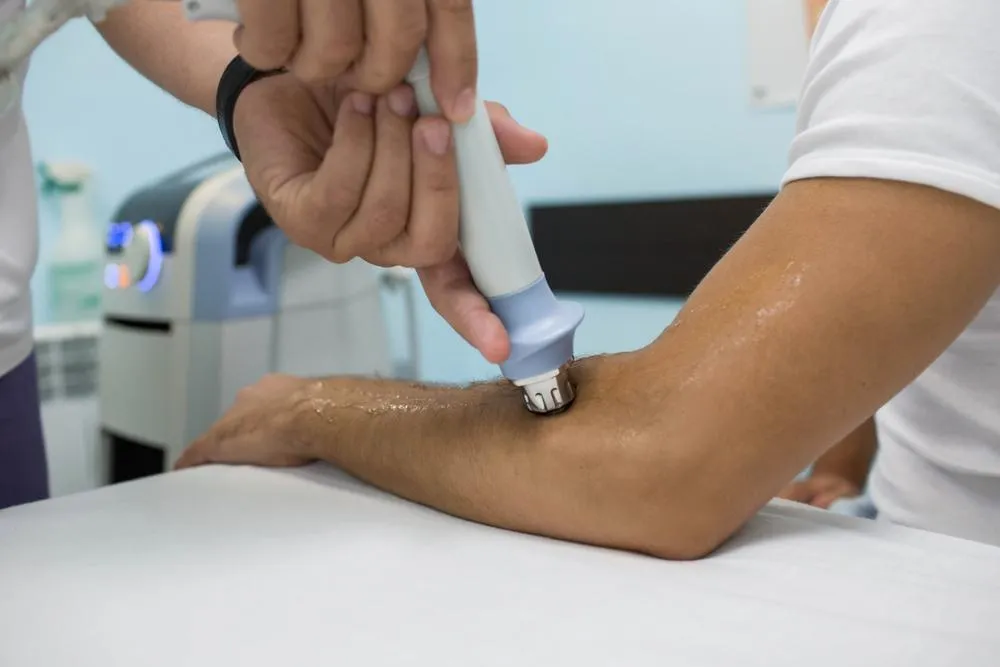
What Really Happens to Muscle Tissue During Shockwave Therapy?
When chronic pain or a stubborn injury refuses to heal, many turn to shockwave therapy as a way to restart the body’s natural repair system. What seems like a simple device delivering sound waves to injured muscles actually triggers an extraordinary cascade of biological events beneath the surface: microscopic processes that wake up dormant cells, stimulate blood flow, and repair damaged tissue.
Let’s take a closer look at what’s really happening inside your body when you undergo this innovative therapy and why it’s become a cornerstone of recovery for those determined to move without pain again.
The Controlled Microtrauma That Starts It All
At its core, shockwave therapy works by sending acoustic waves deep into soft tissues. These high-energy pulses create microtrauma, which are tiny, controlled disruptions within the muscle fibers and surrounding connective tissue.
While “trauma” might sound harmful, this process is actually what sparks healing. The body perceives these micro-injuries as a call to action, prompting a natural inflammatory response. Growth factors are released, and cellular repair mechanisms kick in. Over time, these same mechanisms begin rebuilding stronger, more resilient muscle tissue.
This is one reason athletes and active individuals include it in their sports injury treatment program. It accelerates the body’s response without the long downtime associated with more invasive procedures.

Photo: Optimal Health Members
Improved Blood Flow Through Angiogenesis
After the initial cellular activation, the next major change is angiogenesis, or the formation of new blood vessels. These tiny capillaries form to deliver oxygen and nutrients to the area that was previously starved of circulation due to injury or chronic tension.
Better blood flow means more oxygen and faster waste removal, both critical for restoring muscle elasticity and function. Over several sessions, this improved vascular network helps tissues remain healthier, reducing stiffness and promoting smoother movement during training or recovery.
Awakening Dormant Stem Cells
One of the most remarkable effects of shockwave therapy is stem cell activation. These specialized cells typically lie dormant in the body until an injury occurs. When stimulated by acoustic waves, stem cells begin differentiating into the types of cells needed most, whether that’s new muscle fibers, tendon cells, or connective tissue components.
This cellular regeneration is what makes shockwave therapy so effective for chronic injuries that have plateaued in their healing process. The body gets a “second chance” to rebuild the damaged area from the inside out.
Breaking Down Scar Tissue and Calcification
Over time, chronic inflammation or repetitive strain can cause scar tissue to form within muscles and tendons. These fibrous adhesions restrict movement and can cause recurring pain even after the original injury heals.
Shockwave therapy helps to mechanically break down these hardened deposits, restoring normal tissue flexibility. It can also disrupt small calcifications within tendons or joints, helping relieve stiffness and discomfort without surgical intervention.
For many, this makes it one of the most promising non-surgical options for joint pain relief available today.
How Shockwave Therapy Enhances Muscle Recovery
Muscles that have endured repetitive stress, whether from lifting, running, or competition, often struggle to repair quickly enough to keep up with performance demands. Shockwave treatment helps bridge that gap by recharging the body’s regenerative systems.
With increased circulation, stem cell activity, and tissue repair, the therapy not only alleviates pain but also supports long-term muscle health. This is why many professionals now include shockwave therapy as part of their ongoing maintenance plan. It helps reduce inflammation, shorten recovery windows, and protect against future injury.
Beyond the Muscles: Systemic Benefits
The effects of shockwave therapy extend far beyond the treatment area. Because it enhances cellular signaling, the body’s overall metabolic efficiency improves. This often means better mobility, reduced fatigue, and improved tissue oxygenation.
When paired with proper nutrition and lifestyle changes, it becomes part of a holistic healing process that supports both performance and longevity. For example, understanding how your weight can impact joint health can help you make changes that reduce unnecessary stress on muscles and connective tissue.

Photo: Optimal Health Members
The Science of Healing Without Surgery
What makes this approach truly remarkable is how it allows the body to do what it was designed to do, which is to heal itself. Unlike surgeries that remove or replace damaged tissue, shockwave therapy restores functionality from within.
Because it is non-invasive, there’s no need for anesthesia, no scarring, and virtually no downtime. Patients often resume normal activity immediately after a session, noticing gradual improvements over the following weeks as the body continues to regenerate.
This self-healing aspect is what sets shockwave therapy apart. It doesn’t mask symptoms; it retrains the body to function properly again.
Taking Recovery Further with Shockwave Therapy
At Optimal Health Members, we’ve seen how shockwave therapy transforms recovery journeys. Our SoftWave service uses FDA-cleared technology to target deep muscle tissue, stimulate cellular repair, and reduce inflammation, helping patients reclaim strength, mobility, and confidence.
But we don’t stop there. Our approach combines advanced therapies such as laser-enhanced spinal decompression, extremity-focused chiropractic adjustments, and nutritional consulting to accelerate results. We are proud to offer one of the most progressive recovery environments on the West Coast, especially for those who want lasting relief without surgery. Book a session today.